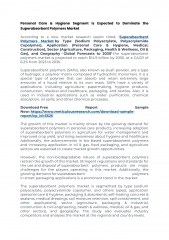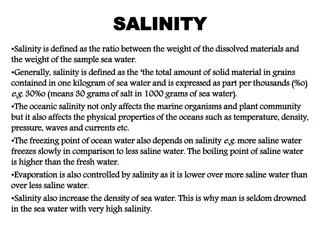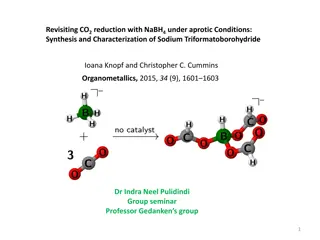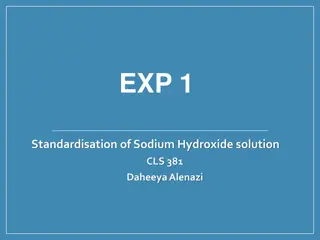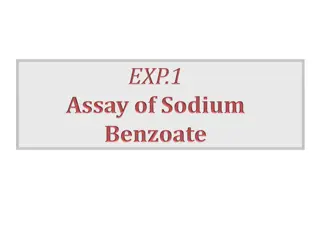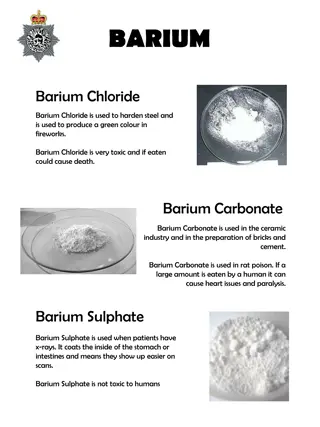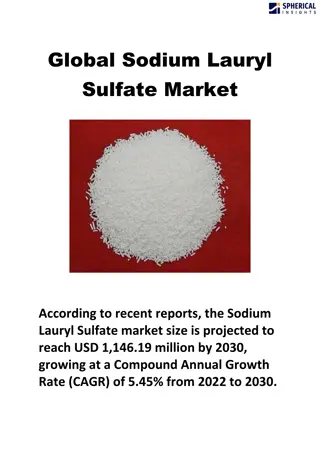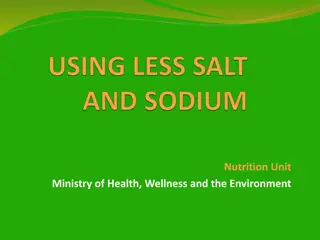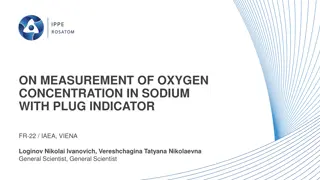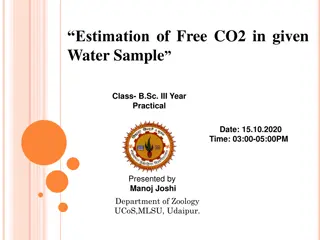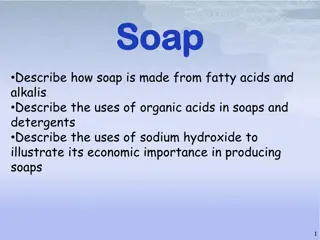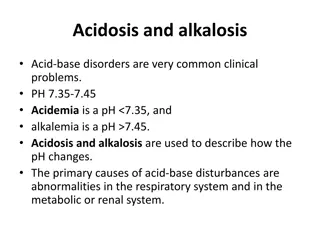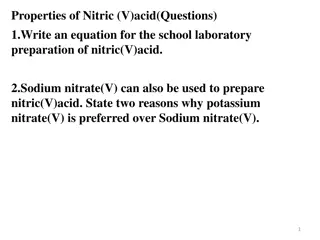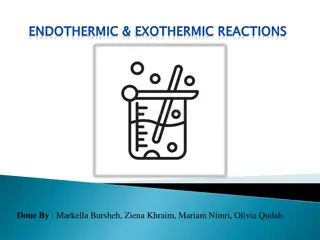READ [PDF] Dash diet Cookbook for beginners: 365 days of simple, healthy, low-s
\"10 minutes ago - \ndownload Here : https:\/\/bb.filegood.club\/is=B09XZDTRD7\nRead Dash diet Cookbook for beginners: 365 days of simple, healthy, low-sodium recipes to lower blood pressure and live a healthy life. acces\n u Are you looking for a diet that will help you lower your blood pressure
11 views • 6 slides
Personal Care & Hygiene Segment is Expected to Dominate the Superabsorbent Polymers Market
According to a new market research report titled, \u2018Superabsorbent \nPolymers Market by Type (Sodium Polyacrylate, Polyacrylamide \nCopolymer), Application (Personal Care & Hygiene, Medical, \nConstruction), Sector (Agriculture, Packaging, Health & Wellness, Oil & \nGas), and Geography - Global
0 views • 3 slides
NSLP 101: An Overview of the National School Lunch Program
The National School Lunch Program (NSLP) is a federally funded program providing nutritionally balanced, low-cost or free lunches to school children each school day. School Food Authorities (SFAs) ensure meals meet federal requirements without discrimination. Guidelines include offering meal compone
9 views • 73 slides
Titration Colour Changes
This collection features various experiments in chemistry involving titration and solutions. It includes procedures such as standardizing hydrochloric acid using sodium carbonate, titrating hydrochloric acid with sodium hydroxide to produce sodium chloride, determining the concentration of ethanoic
0 views • 10 slides
Electrolyte and Metabolic Disturbances in the Critically Ill
Dr. Srilekha Ammapalli discusses the cations (sodium, potassium, calcium, magnesium) and anions (chloride, bicarbonate, phosphate, lactate) involved in electrolyte and metabolic disturbances in critically ill patients. The physiology, causes of abnormalities, diagnosis, evaluation, and management of
2 views • 104 slides
Anticonvulsants drugs
Phenytoin is an anticonvulsant drug used for various seizure disorders. It acts by inactivating sodium ion channels to reduce neuronal firing. The medication's kinetics, serum concentration-related side effects, and monitoring issues are essential aspects to consider when administering Phenytoin.
1 views • 39 slides
Pharmaceutical Technology Lab: Nasal and Ear Drops Formulations
Learn about the formulation and use of nasal and ear drops in pharmaceutical technology labs. Explore details on nasal drops for nasal passages, ephedrine nasal drop recipe, notes on ingredients, ear drops for ear care, sodium bicarbonate ear drop recipe, and procedures for preparation. Understand t
2 views • 13 slides
Volumetric Analysis Experiment: Standardization of Hydrochloric Acid Using Sodium Carbonate
In this experiment, hydrochloric acid (HCl) is standardized by using standard sodium carbonate (Na2CO3) due to the impurity of HCl. The process involves preparing 0.1N HCl and Na2CO3 solutions, performing a titration to determine the equivalence point, and calculating the concentration of the HCl so
6 views • 28 slides
Comprehensive Overview of Pancreas Function and Structure
Pancreas is a vital organ in the abdomen with dual exocrine and endocrine functions. As an exocrine organ, it secretes digestive enzymes and bicarbonates into the duodenum for food breakdown. In its endocrine role, the pancreas regulates blood sugar levels by secreting insulin, glucagon, somatostati
1 views • 16 slides
Sodium Gluconate Market Business Statistics and Top Overview, Revenue
The most recent Global Sodium Gluconate Market\u00a0Report 2022\u20132029\u00a0from Adroit Market Research offers a thorough analysis of the opportunities, challenges, and trends in this ever-changing industry.
0 views • 5 slides
Global Sodium Cyanide Market
The Global Sodium Cyanide Market Size is Anticipated to Exceed USD 3491.55 Million by 2033, Growing at a CAGR of 4.40% from 2023 to 2033. \n\n
0 views • 5 slides
Understanding Salinity in Seawater and Its Impacts
Salinity is the ratio of dissolved materials to the weight of seawater, affecting marine life and physical ocean properties like temperature, density, and waves. It influences freezing and boiling points, evaporation, and water density. Seawater composition includes salts like sodium chloride, magne
0 views • 11 slides
Sodium Triformatoborohydride Formation via NaBH4-CO2 Reaction
Sodium triformatoborohydride, Na[HB(OCHO)3], is synthesized by reacting NaBH4 with CO2 under aprotic conditions. The choice of reductant is crucial for CO2 reduction methods, highlighting the role of NaBH4 as a cost-effective and reactive reducing agent for formate production. The exclusive formatio
1 views • 12 slides
Overview of Veterinary Clinical Pathology and Importance of Anticoagulants
Veterinary clinical pathology involves the laboratory diagnostics and analysis of bodily fluids and tissues to support the diagnosis, treatment, and prevention of diseases. This field encompasses interpreting blood tests, blood smear examinations, and the use of various anticoagulants in specimen co
3 views • 46 slides
Standardisation of Sodium Hydroxide Solution Experiment
The experiment focuses on the standardisation of sodium hydroxide solution using potassium hydrogen phthalate by titration method. It discusses the types of standard solutions, criteria of primary standards, and the difference between standardisation and titration methods. The objective is to determ
1 views • 26 slides
Sodium Benzoate: Properties, Applications, and Pharmaceutical Uses
Sodium benzoate is a white crystalline powder with various physical and chemical properties. It is commonly used as a preservative in pharmaceutical formulations, cough preparations, and cosmetic products. Additionally, it has pharmaceutical applications in treating urea cycle disorders and schizoph
0 views • 9 slides
Chemical Compounds Overview: Barium, Calcium, Sodium, Lithium
Learn about the uses and potential dangers of Barium Chloride, Barium Carbonate, Barium Sulphate, Calcium Chloride, Calcium Carbonate, Calcium Sulphate, Sodium Chloride, Sodium Carbonate, Sodium Sulphate, Lithium Chloride, Lithium Carbonate, and Lithium Sulphate in various industries and application
0 views • 4 slides
Understanding Bonding in Chemistry
Delve into the world of chemical bonding through ionic, covalent, and metallic bonds. Explore how elements form bonds, from the attraction between sodium and chloride ions to the sharing of electrons in covalent bonds. Witness the formation of compounds like sodium chloride and magnesium oxide, unde
1 views • 12 slides
Understanding Acids, Bases, and Neutrals in Natural Sciences Grade 7
Acids, bases, and neutrals are vital substances found in various settings like factories and laboratories. They exhibit distinct properties, with acids feeling rough, being corrosive, and containing hydrogen ions, while bases feel slippery, taste bitter, and contain hydroxide ions. While acids like
0 views • 15 slides
Understanding Anticoagulants in Laboratory Hematology
Anticoagulants are crucial additives that prevent blood clotting during laboratory procedures. The commonly used anticoagulants include EDTA, sodium citrate, and heparin, each with specific concentrations, modes of action, and color-coded identifications. EDTA is ideal for blood cell counts, sodium
0 views • 6 slides
Role of Major Physiological Anions in the Human Body
Physiological anions such as chlorides, sulphates, bicarbonate, phosphates, and electrolytes play essential roles in maintaining various functions within the body. Chloride ions help in osmotic balance, charge balance, and acid-base balance. Sulphates are important for detoxification mechanisms and
0 views • 11 slides
Understanding Major Intra and Extracellular Electrolytes in Body Fluids
Body fluids contain various electrolytes crucial for maintaining cell and tissue environments. Electrolyte balance is essential for overall health, and external electrolyte replacement therapy may be necessary in certain conditions. The body's fluid compartments - intracellular, interstitial, and pl
0 views • 10 slides
Modeling Water Leak into Sodium in BN-600 Steam Generator
This paper discusses the modeling of a water leak into sodium in the BN-600 steam generator during a specific incident in 1982. It compares calculated data with leak detection system indications and analyzes hydrodynamic parameters in the second sodium circuit. The study utilized SLEAK and LLEAK-3C.
10 views • 9 slides
DIY Erupting Volcano Experiment with Sodium Bicarbonate and Vinegar
Follow these easy steps to create a fun erupting volcano experiment using common household items like sodium bicarbonate and vinegar. Shape the volcano, mix lava ingredients, add vinegar, and watch the eruption happen before your eyes!
0 views • 6 slides
Sodium - Understanding its Role in Your Health
Learn about the importance of sodium in the body, its functions, and the risks of consuming excessive amounts. Discover how sodium impacts health, including its role in maintaining fluid balance and nerve function. Find out ways to reduce salt intake and promote better overall health.
1 views • 38 slides
Exploring Copper Sulfate, Sodium Nitrate, and Ammonium Chloride in Chemistry Projects
Delve into the properties and uses of copper sulfate, sodium nitrate, and ammonium chloride in chemistry projects. Discover how these chemical compounds play vital roles in agriculture, industry, and everyday applications, from fungicides to food additives.
0 views • 9 slides
Measurement of Oxygen Concentration in Sodium with Plug Indicator FR-22
Determining oxygen concentration in sodium using plug indicators is crucial for experimental facilities and nuclear reactors. This involves lowering sodium temperature slowly until sodium oxide crystallization begins, indicating saturation temperature (TS). Several solubility equations exist for cal
0 views • 6 slides
Estimation of Free CO2 in Water Sample for B.Sc. III Year Practical
The practical session focuses on estimating free CO2 in a water sample using titration methods with NaOH and Na2CO3. Students learn the process of converting carbonic acid to neutral sodium bicarbonate to determine the presence of free CO2. Procedures, reagents, observations, and calculations are de
0 views • 6 slides
Understanding the Role of Sodium and Salts in Soil Structure
Soil structure plays a crucial role in plant growth, water movement, and drainage. Excess sodium can cause clay particles to disperse, leading to reduced water infiltration. Flocculation, which involves cations like calcium and magnesium, helps clay particles stick together to form aggregates, impro
0 views • 29 slides
Understanding Soap Making and Uses of Sodium Hydroxide
Soap, an ancient detergent made from fatty acids and alkalis like sodium hydroxide, has been utilized for over 3000 years. Fats and oils are essential raw materials for soap production, and organic acids play a role in creating esters. Sodium hydroxide, a key component in soap making, showcases its
0 views • 9 slides
Determination of Bicarbonate in Blood Using Back Titration
Back titration is an analytical chemistry technique used to determine the concentration of an analyte, such as bicarbonate in blood. This method involves reacting the analyte with an excess reagent, followed by back-titrating the remaining excess and relating it to the original sample's concentratio
0 views • 21 slides
Evaluation of Dynamic Properties and Seismic Performance of Reinforced Ground Using Renewable Materials
Improvement of seismic performance through improved dynamic properties of ground using renewable materials like cement and biopolymer is crucial for reducing earthquake-induced structural damage. This study conducted resonant column tests to assess the enhanced dynamic properties of soil and utilize
0 views • 9 slides
Overview of Shell and Sodium Silicate Molding Processes in Casting
Shell molding is a casting process involving a thin sand shell held together by a resin binder, offering advantages like smoother mold cavity surfaces and good dimensional accuracy. However, it can be costly for small quantities. Sodium Silicate Molding Process involves coating refractory materials
0 views • 19 slides
Understanding Acidosis and Alkalosis in Acid-Base Disorders
Acid-base disorders, involving acidosis and alkalosis, are common in clinical practice. These conditions are characterized by changes in pH levels, with acidemia (pH < 7.35) and alkalemia (pH > 7.45) representing acidosis and alkalosis, respectively. The primary causes of these imbalances lie within
0 views • 17 slides
Laboratory Preparation of Nitric(V) Acid & Chemical Reactions
In this set of questions, we explore the preparation of nitric(V) acid in a school laboratory setting, its properties, and chemical reactions. Topics covered include the use of sodium nitrate(V) and potassium nitrate(V), the use of glass apparatus during the preparation process, color changes in con
0 views • 4 slides
Detecting Cobalt(II) Ion Reactions in Solutions
This experiment outlines various methods for detecting Cobalt(II) ions (Co2+) in solution using reagents like sodium hydroxide, ammonia, sodium or potassium carbonate, and more. Observations and changes in color are noted throughout the process to identify the presence of the Cobalt ions. The reacti
0 views • 19 slides
Understanding Groundwater Quality Assessment
Groundwater quality is vital for various purposes such as drinking, industrial, and irrigation water. Assessing the quality involves measuring physical, chemical, and biological constituents, including inorganic elements like bicarbonate, sulfate, chloride, and more. Major cations and anions play a
0 views • 22 slides
Understanding Endothermic and Exothermic Reactions Through Experiment
Explore the concepts of endothermic and exothermic reactions with a detailed experiment to determine which solute dissolves most endothermically and exothermically in water. Discover the roles of heat transfer in chemical reactions using potassium chloride, calcium chloride, sodium carbonate, and so
0 views • 11 slides
Understanding Buffers in Pharmaceutical Formulations
Buffers in pharmacy play a critical role in maintaining constant pH levels essential for drug stability and efficacy. They resist pH changes by neutralizing added acids or bases, ensuring proper drug delivery and patient comfort. Common buffer systems, such as acetic acid/sodium acetate and boric ac
4 views • 18 slides
![READ [PDF] Dash diet Cookbook for beginners: 365 days of simple, healthy, low-s](/thumb/2057/read-pdf-dash-diet-cookbook-for-beginners-365-days-of-simple-healthy-low-s.jpg)
